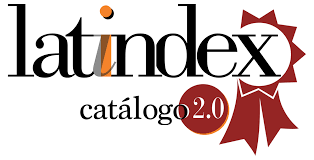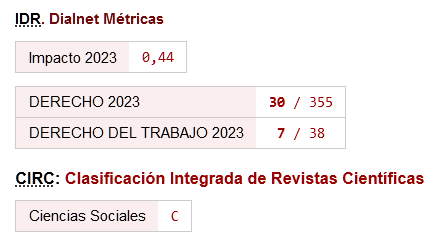Submissions
Submission Preparation Checklist
As part of the submission process, authors are required to check off their submission's compliance with all of the following items, and submissions may be returned to authors that do not adhere to these guidelines.- The submission has not been previously published, nor is it before another journal for consideration (or an explanation has been provided in Comments to the Editor).
- The submission file is in OpenOffice, Microsoft Word, or RTF document file format.
- Where available, URLs for the references have been provided.
- The text is single-spaced; uses a 12-point font; employs italics, rather than underlining (except with URL addresses); and all illustrations, figures, and tables are placed within the text at the appropriate points, rather than at the end.
- The text adheres to the stylistic and bibliographic requirements outlined in the Author Guidelines.
Copyright Notice
Authors' rights, users' rights, liability and Ethics Policy
Authors. Authors who have works published in Lex Social retain copyright and grant the journal the right to publish their work, which will be simultaneously subject to the Lex Social License Creative Commons Attribution-NonCommercial-ShareAlike 4.0International License which allows third parties to share the work as long as reference is made both to the author and to the fact that the work has been published in the journal.
In any case, the authors guarantee and declare the following terms:
a) That their work is original.
b) That their manuscript has not been published in any form previously and that they are not preparing or waiting its publication elsewhere.
c) That their submission and publication does not violate the Code of Ethics of the journal Lex Social, Journal of Social Rights, available on the journal's website, nor the codes of conduct, laws or rights of any third party.
d) That they have not been required to pay for publication in the journal, which is governed by the principle of full gratuity.
e) The authors retain the right to present, exhibit, distribute, develop and publish their work to advance their scientific career with acknowledgment of its original publication in the journal Lex Social, Journal of Social Rights.
f) Authors guarantee that no permissions or licenses of any kind that may violate the rights granted to the Publisher have been or will be granted.
g) The authors are solely responsible for the consequences that may arise from third party claims on the manuscript submitted and its publication in Lex Social, Journal of Social Rights.
Users.Lex Social, Journal of Social Rights is an open access journal. Its content is free of charge. Full and immediate access, reading, searching, downloading, distribution and reuse in any medium or format is permitted only for non-commercial purposes and in accordance with applicable copyright law, without the prior permission of the Journal or its authors.
In any case, proper acknowledgment of the original publication source must be made. Any use of its contents in any medium or format, now known or developed in the future, requires the prior written permission of the copyright holder.
Privacy Statement
The data controller of the personal data provided for the journals to which Revistas UPO gives access is the journal Lex Social: Revista de Derechos Laborales. To consult additional and detailed information on data protection, please contact the journal Lex Social: Revista de Derechos Laborales at the address indicated in "about/contact".
You are also informed that the Universidad Pablo de Olavide acts as Data Processor for each of the files owned by the different journals. Therefore, the Universidad Pablo de Olavide, facilitates the exercise of their rights of access, rectification, deletion, limitation of processing, data portability, opposition and not to be subject to automated individual decisions, including profiling by contacting the headquarters of the Universidad Pablo de Olavide, located at Ctra. de Utrera, km. 1 41013, Seville (ES), or requesting it by email to the address deleg.protecciondedatos@upo.es, accompanied by proof of identity.


 @Lex Social
@Lex Social Linkedin
Linkedin @lexrevista.bsky.social
@lexrevista.bsky.social


